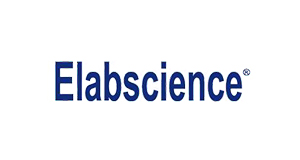Recombinant Human EPO protein (His tag)
Recombinant Human EPO protein (His tag)
SKU
ELSPDEH100222-20
Packaging Unit
20 µg
Manufacturer
Elabscience Biotechnology
Availability:
loading...
Price is loading...
Abbreviation: EPO
Target Synonym: Epoetin;EPO;Erythropoietin
Target Species: Human
Expression Host: E.coli
Fusion Tag: C-His
UNIProt ID: P01588
Background: Erythropoietin (EPO) is a 34 kDa glycoprotein hormone in the type I cytokine family and is related to thrombopoietin. Its three N-glycosylation sites, four alpha helices, and N- to C-terminal disulfide bond are conserved across species. Glycosylation of the EPO protein is required for biological activities in vivo. The mature human EPO protein shares 75% - 84% amino acid sequence identity with bovine, canine, equine, feline, mouse, ovine, porcine, and rat EPO. EPO is primarily produced in the kidney by a population of fibroblast-like cortical interstitial cells adjacent to the proximal tubules. It is also produced in much lower, but functionally significant amounts by fetal hepatocytes and in adult liver and brain. EPO promotes erythrocyte formation by preventing the apoptosis of early erythroid precursors which express the erythropoietin receptor (EPO R). EPO R has also been described in brain, retina, heart, skeletal muscle, kidney, endothelial cells, and a variety of tumor cells. Ligand induced dimerization of EPO R triggers JAK2-mediated signaling pathways followed by receptor/ligand endocytosis and degradation. Rapid regulation of circulating EPO allows tight control of erythrocyte production and hemoglobin concentrations. Anemia or other causes of low tissue oxygen tension induce erythropoietin production by stabilizing the hypoxia-induceable transcription factors HIF-1 alpha and HIF-2 alpha. EPO additionally plays a tissue-protective role in ischemia by blocking apoptosis and inducing angiogenesis.
Sequence: Ala 28-Arg 193
Purity: > 95 % as determined by reducing SDS-PAGE.
Formulation: Lyophilized from sterile PBS, pH 7.4.
Normally 5 % - 8 % trehalose, mannitol and 0.01% Tween80 are added as protectants before lyophilization.
Please refer to the specific buffer information in the printed manual.
Endotoxin: Please contact us for more information.
Target Synonym: Epoetin;EPO;Erythropoietin
Target Species: Human
Expression Host: E.coli
Fusion Tag: C-His
UNIProt ID: P01588
Background: Erythropoietin (EPO) is a 34 kDa glycoprotein hormone in the type I cytokine family and is related to thrombopoietin. Its three N-glycosylation sites, four alpha helices, and N- to C-terminal disulfide bond are conserved across species. Glycosylation of the EPO protein is required for biological activities in vivo. The mature human EPO protein shares 75% - 84% amino acid sequence identity with bovine, canine, equine, feline, mouse, ovine, porcine, and rat EPO. EPO is primarily produced in the kidney by a population of fibroblast-like cortical interstitial cells adjacent to the proximal tubules. It is also produced in much lower, but functionally significant amounts by fetal hepatocytes and in adult liver and brain. EPO promotes erythrocyte formation by preventing the apoptosis of early erythroid precursors which express the erythropoietin receptor (EPO R). EPO R has also been described in brain, retina, heart, skeletal muscle, kidney, endothelial cells, and a variety of tumor cells. Ligand induced dimerization of EPO R triggers JAK2-mediated signaling pathways followed by receptor/ligand endocytosis and degradation. Rapid regulation of circulating EPO allows tight control of erythrocyte production and hemoglobin concentrations. Anemia or other causes of low tissue oxygen tension induce erythropoietin production by stabilizing the hypoxia-induceable transcription factors HIF-1 alpha and HIF-2 alpha. EPO additionally plays a tissue-protective role in ischemia by blocking apoptosis and inducing angiogenesis.
Sequence: Ala 28-Arg 193
Purity: > 95 % as determined by reducing SDS-PAGE.
Formulation: Lyophilized from sterile PBS, pH 7.4.
Normally 5 % - 8 % trehalose, mannitol and 0.01% Tween80 are added as protectants before lyophilization.
Please refer to the specific buffer information in the printed manual.
Endotoxin: Please contact us for more information.

 Deutsch
Deutsch










